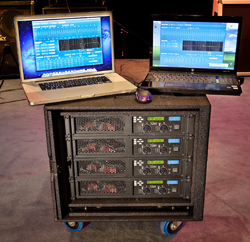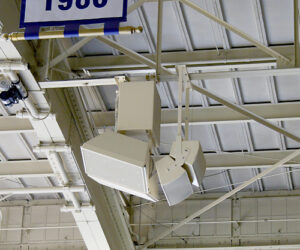There’s a lot to like when it comes to modern power amplifiers, and a variety of options abound. They provide tremendous power from far lighter packages, and in many cases, resemble a rack-mount processor more than a device capable of generating several thousand watts of audio power.
The primary advancement in terms of power is efficiency. Greater output efficiency means less heat, and therefore, less weight, as well as more AC power making it to the loudspeakers.
The most common amplifier topology now is class D (and variations), which uses an on-off switching method for its transistors called Pulse Width Modulation. Because its output devices are either on or off, the efficiency of the amplifier is greatly increased, and this is done without jeopardizing the integrity of the audio waveform by switching positive and negative output transistors on and off many times per waveform cycle.
This method is analog, but similar in theory to digital sampling where a 44.1 kHz sampling rate is used to accurately capture a 20 kHz signal. This rapid switching creates a square wave that is then low-pass filtered to recreate the audio waveform.
The addition of DSP into the package is a further enhancement, offering convenience, space and cost savings, operating efficiencies, performance advantages and more. Most modern amplifiers also benefit from networked control protocols, making them easier than ever to configure and monitor during a show.
In the early 1990s, Yamaha introduced the D2040 digital loudspeaker processor, allowing users to program crossover presets, including gain, delay, parametric EQ and limiting, to optimize multi-way loudspeaker systems beyond just manually turning analog pots to choose the crossover slopes.
At about the same time, Crown put DSP into its amplifiers with P.I.P. (programmable input processor) DSP cards, employing a Motorola 56002 microprocessor chip, to provide limiting, delay, crossover and EQ filters. This allowed the amplifier to be self-processed for bi-amplifying, optimizing specific makes of 2-way loudspeakers and eliminating the need for external digital signal processing.
















